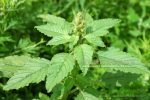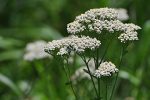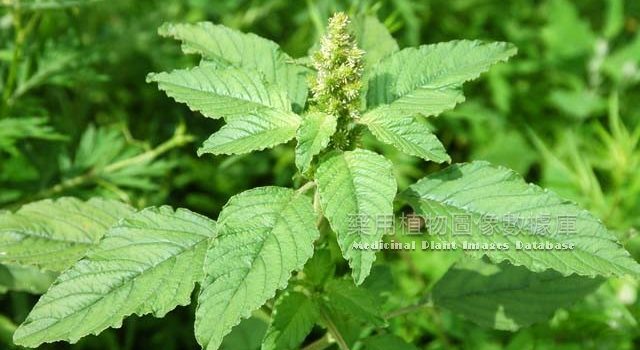If things go very wrong, such as in an EOTWAWKI or SHTF scenario, you may find yourself without access to doctors and hospitals and may have to take care of yourself and your family. This is why we are looking at common weeds that can be used as food and medicine. You may want to print this and save it for such a time, when things are stressful and you may not remember the information here.
Warning: Never eat a wild plant unless you are 100 percent positive of its identification. Get yourself a good field guide, like Edible Wild Plants – A North American Field Guide.
In the three previous parts of this article, we have covered a number of other “weeds”. We’ll now move on forward through the alphabet of most common weeds for food and medicine, beginning with purslane.
Purslane
Purslane (Portulaca oleracea), believe it or not, though it is one you pull from your garden is sold in stores in Europe and was Gandhi’s favorite food.
Properties
 It’s high in omega 3’s, more than some fish oils. In fact, 100 grams of purslane leaves contain about 350 mg of a-linolenic acid. It is also an excellent source of vitamin A (1320 IU/100 g – 44% of the RDA), vitamin C, some of the B-complex vitamins, like riboflavin, niacin, pyridoxine, and carotenoids, as well as iron, magnesium, calcium, potassium, and manganese.
It’s high in omega 3’s, more than some fish oils. In fact, 100 grams of purslane leaves contain about 350 mg of a-linolenic acid. It is also an excellent source of vitamin A (1320 IU/100 g – 44% of the RDA), vitamin C, some of the B-complex vitamins, like riboflavin, niacin, pyridoxine, and carotenoids, as well as iron, magnesium, calcium, potassium, and manganese.
Purslane used to grow abundantly in my mother’s garden. She cursed it and pulled it up by the tons, until I moved back to the area and saw what she was doing. I then pleaded with her to allow it to get a little bigger; then, I came over and did her weeding for her. I brought it home, stuck it in buckets with water on my back deck, and ate it at my leisure. It is crunchy and sweet and a delicious salad herb!
To retain the majority of vitamins, eat purslane raw. It, like some other vegetables such as spinach, contains oxalic acid, so people with oxalate urinary tract stones, should probably cook it slightly, which reduces/removes the oxalic acid. Sautéed and gently stewed, it makes a nice side dish for fish and poultry. It has also been used in soup and curry and eaten with rice.
Medicinal Uses
Medicinally, purslane reduces LDL– the “bad cholesterol”– helping with cardiovascular diseases and atherosclerosis and thereby helping to prevent heart attacks and strokes. It reduces blood pressure due to its vasodilation effects. Its high omega-3 levels help with child development, helping the brain and decreasing developmental disorders, including autism and ADHD. Its high fiber and low calories can help people feel fuller without increasing calorie intake and help them lose weight. Applied topically, it reduces inflammation caused by bee stings and snake bites. When consumed, it improves skin health and appearance, reduces wrinkles, and stimulates the healing of skin cells to remove scars and blemishes.
Purslane also helps to prevent lung and oral cancers and also helps to reduce macular degeneration and cataracts.
Note: Avoid internal use if suffering from kidney stones.
Poisonous Look Alikes
Purslane has no poisonous look alikes.
Redroot Pigweed
Redroot Pigweed (Amaranthus retroflexus) is a form of Amaranth, which is one of the seeds that contains complete proteins. All parts of the plant are edible.
Properties
 The greens are rich in iron, calcium, niacin, and vitamins A and C, and the seeds are high in protein (15 to 16 %), and fiber (~8%). Young leaves can be eaten raw or cooked like spinach, sautéed, et cetera. Pigweed has a mild flavor and is often mixed with stronger flavored leaves, such as dandelion or lambs quarters. The leaves can be steamed, sautéed, fried, or cooked with spices and seasonings. It can also be sprouted and added to salads.
The greens are rich in iron, calcium, niacin, and vitamins A and C, and the seeds are high in protein (15 to 16 %), and fiber (~8%). Young leaves can be eaten raw or cooked like spinach, sautéed, et cetera. Pigweed has a mild flavor and is often mixed with stronger flavored leaves, such as dandelion or lambs quarters. The leaves can be steamed, sautéed, fried, or cooked with spices and seasonings. It can also be sprouted and added to salads.
The seed is very small but easy to harvest and very nutritious. The flavor is greatly improved by roasting the seed before grinding it. The seeds may be eaten raw, cooked as hot cereal or mush, ground into flour, or popped like popcorn.
Medicinal Uses
Medicinally, a tea made from the fresh or dried leaves is astringent and used to treat hoarseness. It is also useful in the treatment of profuse menstruation, intestinal bleeding, and diarrhea. It is good for making salves or ointments to treat and heal wounds. The seed oil is useful when applied to burns and rashes and healing for acne.
Poisonous Look Alikes
There are no redroot pigweed look alikes. However, pigweed is a nitrate concentrator, so plants from nitrate-fertilized areas should only be eaten in moderation.
Yarrow
Properties
Yarrow (Achillea millefolium) is a perennial herb. It is found worldwide and grows in almost all places. The plant can be found flourishing in waste lands, meadows, pastures, edges of the railway tracks, the countryside, and along the highways.
Medicinal Uses
 Yarrow makes a versatile medicinal remedy that, when applied externally, is useful in curing cuts and wounds, burns, and ulcers as well as swollen and irritated (inflamed) skin. A piece of the plant held against a wound will staunch bleeding.
Yarrow makes a versatile medicinal remedy that, when applied externally, is useful in curing cuts and wounds, burns, and ulcers as well as swollen and irritated (inflamed) skin. A piece of the plant held against a wound will staunch bleeding.
When taken internally, yarrow invigorates appetite and increases digestion as well as the absorption of nutrients by the body. The astringent feature of yarrow makes it useful medication in stopping diarrhea. In addition, yarrow’s sterile and anti-inflammatory qualities help in healing infections and swollen organs, like in the case of gastritis and enteritis. The bitter properties of yarrow make the herb invigorating to the liver. Yarrow is also helpful in relieving cramps arising out of tensions, gas, colic, or imperfect or painful digestion.
When consumed hot, yarrow is a superb medication that helps in getting relief from fevers and contagions like coughs, colds, and sore throats. Yarrow is also beneficial in bringing down fever and removing toxins from the system through increased perspiration. Yarrow can also be used as a stimulant for the circulatory system and is also useful in lowering blood pressure. It helps in healing varicose veins, hemorrhoids, phlebitis (inflammation of superficial veins that results in pain), and thrombosis.
Yarrow is also an efficient diuretic (an agent that promotes urine production and flow) and helps in letting out excessive fluids and toxins through enhanced urination. Furthermore, yarrow helps to get relief from a bladder infection marked by pain as well as frequent, painful urination, irritable bladder, bladder stones, and irritation. In addition, the herb is useful in soothing painful joints and also clears the skin.
Yarrow is an extremely beneficial remedy for womenfolk. It acts similar to hormones and aids in controlling the menstrual cycle, moderates serious bleeding during menstruation as well as heals uterus blockages. It also helps in providing relief during heavy periods.
Do not use yarrow during pregnancy, for undiagnosed bleeding, or for more than two weeks.
Poisonous Look Alikes
Yarrow does have poisonous look alikes. Poisonous plants with small white flowers that may be confused with yarrow include mayweed chamomile (Anthemis cotula), western water hemlock (Cicuta douglasii, poison hemlock), and spotted water hemlock (Cicuta maculata, spotted parsley, spotted cowbane).
Other look-alikes include wild carrot (Daucus carota, Queen Anne’s Lace) and water parsnip (Sium suave, swamp parsnip). All parts of water hemlock are highly poisonous, but wild carrot and water parsnip have parts that are considered edible.
NOTE: The easiest way to distinguish yarrow from its look alikes is to remember that “its flowers stagger and its roots crawl”.
See Also:
- 1- Common “Weeds” as Food and Medicine- Part 1, by M.C.
- 2- Common “Weeds” as Food and Medicine- Part 2, by M.C.
- 4- Common “Weeds” as Food and Medicine- Part 3, by M.C.
SurvivalBlog Writing Contest
This has been part four of a four part entry for Round 80 of the SurvivalBlog non-fiction writing contest. The nearly $11,000 worth of prizes for this round include:
First Prize:
- A $3000 gift certificate towards a Sol-Ark Solar Generator from Veteran owned Portable Solar LLC. The only EMP Hardened Solar Generator System available to the public.
- A Gunsite Academy Three Day Course Certificate. This can be used for any one, two, or three day course (a $1,095 value),
- A course certificate from onPoint Tactical for the prize winner’s choice of three-day civilian courses, excluding those restricted for military or government teams. Three day onPoint courses normally cost $795,
- DRD Tactical is providing a 5.56 NATO QD Billet upper. These have hammer forged, chrome-lined barrels and a hard case, to go with your own AR lower. It will allow any standard AR-type rifle to have a quick change barrel. This can be assembled in less than one minute without the use of any tools. It also provides a compact carry capability in a hard case or in 3-day pack (an $1,100 value),
- Two cases of Mountain House freeze-dried assorted entrees in #10 cans, courtesy of Ready Made Resources (a $350 value),
- A $250 gift certificate good for any product from Sunflower Ammo,
- American Gunsmithing Institute (AGI) is providing a $300 certificate good towards any of their DVD training courses.
Second Prize:
- A Model 175 Series Solar Generator provided by Quantum Harvest LLC (a $439 value),
- A Glock form factor SIRT laser training pistol and a SIRT AR-15/M4 Laser Training Bolt, courtesy of Next Level Training, which have a combined retail value of $589,
- A gift certificate for any two or three-day class from Max Velocity Tactical (a $600 value),
- A Three-Day Deluxe Emergency Kit from Emergency Essentials (a $190 value),
- Two 1,000-foot spools of full mil-spec U.S.-made 750 paracord (in-stock colors only) from www.TOUGHGRID.com (a $240 value).
- An assortment of products along with a one hour consultation on health and wellness from Pruitt’s Tree Resin (a $265 value).
Third Prize:
- A Royal Berkey water filter, courtesy of Directive 21 (a $275 value),
- A large handmade clothes drying rack, a washboard, and a Homesteading for Beginners DVD, all courtesy of The Homestead Store, with a combined value of $206,
- Expanded sets of both washable feminine pads and liners, donated by Naturally Cozy (a $185 retail value),
- Two Super Survival Pack seed collections, a $150 value, courtesy of Seed for Security, LLC,
- Mayflower Trading is donating a $200 gift certificate for homesteading appliances.
Round 80 ends on January 31st, so get busy writing and e-mail us your entry. Remember that there is a 1,500-word minimum, and that articles on practical “how to” skills for survival have an advantage in the judging.











Spurge is a semi-poisonous (can cause upset digestive) purslane look-alike. Check the sap color, if white/milky do not consume.
Purslane is very succulent and spurge is not. Purslane smells like lettuce and spurge smells sharp and strong. I cannot imagine ever confusing the two. The trick is to thoroughly identify plants with the help of someone who is experienced. Take time to become very familiar with each plant before moving on to the next and you will not likely experience confusion.
Spurge likes to grow intermixed with purslane and because it is smaller and thinner, it may get missed before the purslane goes in the pot. So check your purslane (verdolagas) well.
Desert Tortoises like, and can eat spurge though.
When we moved to our new home this past spring, we got a trailerload of mulch from the city to spread over our garden. Within a few days, the whole garden began to sprout small plants. They were all purslane. I covered most of the area with landscape cloth and straw, but left a small area for the purslane to grow. Around here, the locals call it pigweed, and it’s considered a nuisance. I suspect that any “weeds” that were considered undesirable to have growing in one’s garden were tossed to the pigs, and all were designated “pig weed.”
It’s delicious, by the way.
Thanks again for your wonderful article. A nice addition would be a bibliography of useful books for those of us who are beginning herbalists.
Very interesting. If anyone has any book titles on this subject please post.
Several people have requested a list of books. I have so many herb books.
The first thing I would recommend is that you get a good field guide for your area. Hopefully, that will make sure you don’t get anything poisonous.
For herbal medicine (I have shelves and shelves of them) my favorites are:
The School of Natural Healing, by Dr. Christopher
Making Plant Medicine, by Richo Cech
Herbal Antivirals and Herbal Antibiotics, both by Stephen Harrod Buhner
However, please note that my favorites might not be your favorites, and most importantly, you can never have too many herbal medicine books.
I like Samuel Thayer’s books. I particularly like “Nature’s Garden, A Guide to Identitying, Harvesting, and Preparing Edible Wild Plants”. In there is a chapter dedicated to acorns- how to harvest and find the ones lowest in tannin, how to process, and how to store. It’s the most comprehensive info on acorns I’ve seen.
I also like HerbalGram- a quarterly journal. It’s pricy, I read it at the library. But I believe they have an online presence.
Revisit this when all turns green again . This stuff is growing all over my homestead .